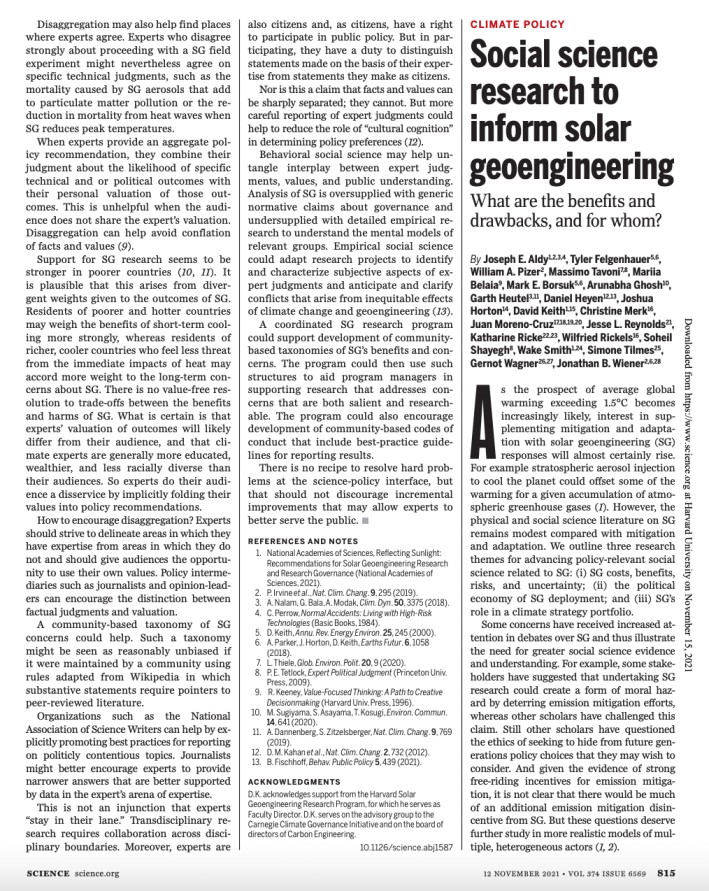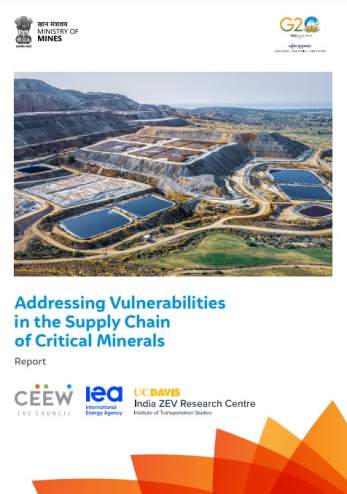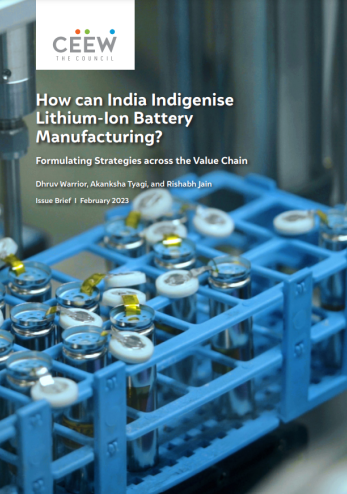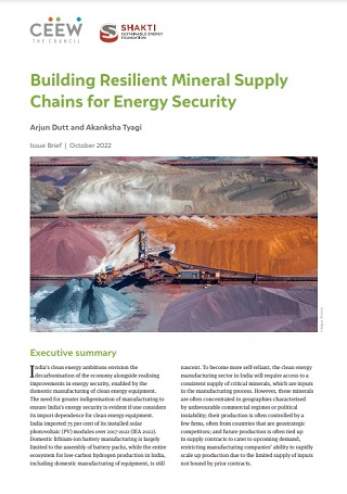Other Publications
Social Science Research to Inform Solar Geoengineering
Joseph E. Aldy, Tyler Felgenhauer, William A. Pizer, Massimo Tavoni, Mariia Belaia, Mark E. Borsuk, Arunabha Ghosh, Garth Heutel, Daniel Heyen, Joshua Horton, David Keith, Christine Merk,Juan Moreno-Cruz, Jesse L. Reynolds, Katharine Ricke, Wilfried Ricke
December 2021 | Technology Futures
Suggested citation: Aldy, Joseph E., Tyler Felgenhauer, William A. Pizer, Massimo Tavoni, Mariia Belaia, Mark E. Borsuk, Arunabha Ghosh et al. "Social science research to inform solar geoengineering." Science 374, no. 6569 (2021): 815-818.
Overview
This paper highlights three themes for advancing policy-relevant social science research on solar geoengineering. It examines the costs, benefits, risks, and uncertainty of solar geoengineering; the political economy of its deployment; and its role in a climate strategy portfolio. As the prospect of average global warming exceeding 1.5°C becomes increasingly likely, interest in supplementing mitigation and adaptation with solar geoengineering responses will almost certainly rise. However, the physical and social science literature on the technology remains modest compared with mitigation and adaptation.
Key Highlights
- Despite the potential for solar geoengineering to reduce climate change risks, the international community has not addressed it under the UN Framework Convention on Climate Change. This is mirrored by a dearth of national programs and governance.
- Weak global governance, coupled with modest solar geoengineering costs, has raised concern about “free drivers” unilaterally deploying geoengineering interventions.
- The value and risk tradeoffs of solar geoengineering — evaluated through cost-benefit analysis — would depend critically on how it may be paired with, or affect, emission mitigation and adaptation.
- The direct costs of implementing solar geoengineering interventions could be about USD 5 billion per year, two to three orders of magnitude less than estimated climate change damages and the costs of ambitious emission mitigation.
- Exploration of solar geoengineering options by decision makers could make climate change more salient for the public and galvanise support for more ambitious emission mitigation. Rigorous theoretical analysis, coupled with well-designed surveys and laboratory experiments, could better inform our understanding of how solar geoengineering deployment would influence emission mitigation.
Key Recommendations
- Address the gaps in our understanding of solar geoengineering, which is most relevant for decision-making, through interdisciplinary research among social and natural scientists. A critical assessment of the justice implications of its implementation would enrich the political economy evaluation of government decision-making
- Convene experts on solar geoengineering and international relations and use game theory, behavioral experiments, and simulations to understand the possible evolution of strategies and countermoves.
- Integrate climate and social systems through numerical modeling in order to understand how multiple interactions add up in a consistent framework. Solar geoengineering research can build upon and integrate with the growing empirical evidence of climate change impacts on conflicts, migration, health, labor and agricultural productivity.
- Undertake assessments by sociologists and cultural anthropologists, as well as science and technology studies scholars, to understand how norms and culture evolve as new technologies enter the policy space.
- Utilise behavioral science to explore the mental models of relevant decision-makers in the government and throughout society with respect to solar geoengineering and other climate risk reduction strategies.
Exploration of solar geoengineering options by decision makers could make climate change more salient for the public and galvanise support for more ambitious emission mitigation








